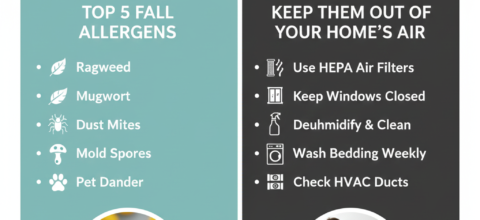Should you clean the dryer vent on your own or hire a pro?
The “to do” list for homeowners is never truly completed. Some maintenance tasks need to be done every year, if not more frequently. You can do many of these tasks on your own, but for some work you’ll need to call in a professional.
In some cases, it may not be entirely clear whether you can save the money and complete a task on your own. Cleaning out the dryer vent might seem simple enough to be a “do it yourself” job, but calling in an HVAC specialist is often necessary to get the best results.
Lint dangers
Most homeowners will diligently clean their dryer’s lint screen before putting in a new load of clothes. But lint will still be able to make its way past the screen and build up in the hoses or ductwork which vents outside.
Dryer fires are one of the leading causes of home fires in the United States. Too much lint can impede air flow in the vent, causing the appliance to overheat. Excess lint can also be ignited by the dryer’s heating elements.
There are several warning signs that your vents are becoming unsafe. These include clothes taking longer to dry, not drying fully, or becoming noticeably hot to the touch after a cycle. You may also notice that the dryer is hotter than usual after running or that the air around the appliance is humid.
Not cleaning your vents will not only increase the risk of a fire, but can also cost you a significant amount of money. Dryers with clogged vents will not run as efficiently, leading to an increase in your electric bill. The lifespan of your dryer can also be shortened when the vent is not cleaned.
DIY
How often you clean your dryer vent depends on your laundry habits. This cleaning should be done at least once a year. If you are constantly running loads of laundry, lint will build up more quickly. The U.S. Fire Administration recommends cleaning the vent every three months.
If you want to clean the dryer on your own, it is important to unplug it first. You’ll also need to be able to pull the dryer away from the wall.
Specialized brushes are available to help you clean out vents and ductwork on your own. The brushes should also be used to clean out the cavity where the lint screen is held, since a considerable amount of lint can build up in this space.
The vent hose or ductwork can be disconnected from the dryer, and each section can then be disconnected individually. You can then use the brush to carefully sweep out each section, removing any clumps of lint that have built up.
Have a shop vacuum handy to suck up any dust or hidden areas where lint has built up. The crevice attachment is handy for cleaning out the hole on the back of the dryer where the hose or duct attaches, and will also work well to remove lint from the hoses or ducts themselves.
The dryer will often have an exterior vent on an easily accessible area of the ground floor. By removing the vent cover, you’ll be able to brush out the hose or duct from this end or even remove clumps of lint by hand.
After cleaning the vent from the exterior side, you may want to run an empty dryer on the air dry setting. By leaving the cover off, you can expel any loose pieces of lint that you weren’t able to remove.
Once you are done cleaning, replace the vent cover and reassemble the hose or ducts. You may consider replacing semi-rigid flexible ductwork with rigid adjustable elbows. Semi-rigid hoses can bunch up when the dryer is pushed back into place, inhibiting the airflow.
Consider whether to replace flexible hoses with metal ductwork. Lint is less likely to build up in this type of vent, which is also more likely to contain any fire that is sparked by the dryer.
Professional advantages
Many dryers have only a short amount of ductwork to vent to the exterior. However, others will vent through the roof or extend for dozens of feet before they reach the outside. An HVAC professional will be able to save you time and do a better job of cleaning longer vents.
Attempting to clean a vent on your own can sometimes make the blockages even worse if your brush isn’t long enough to clear the entire length of the hose or duct. Instead, you’ll push the lint into a concentrated area in the middle of the vent.
Brush kits are sometimes insufficient for the job. They may even end up puncturing a dryer hose if you are not careful. Brushes can also get caught on the ridges of flexible ducts, at which point you’ll have to call in a professional to get this new obstacle out of the vent.
HVAC professionals have tools which are better suited for cleaning vents than a simple brush. One option is a compressed air system which snakes through the ductwork to push or pull lint blockages toward the exterior vent where they can be expelled. A professional can also run diagnostics on the vent to look for leaks or any other problems.
You can easily schedule another checkup with an HVAC specialist who visits to clean out the dryer vent. For example, they may be able to inspect your furnace on the same visit.
Regular tasks
Every homeowner should know to clean off the lint screen before running the dryer. But several other steps can also help reduce the amount of lint buildup in the vent.
Hang up bedsheets, pillows, or other bulky items instead of running them through the dryer. These items take longer to dry and will send more lint into the ductwork.
Minimize the number of dryer sheets you use in a cycle. These sheets can deposit flammable oils or chemicals in the dryer.
These materials can also cause a film to develop on the dryer’s moisture sensor, hindering its ability to detect when clothes are dry. Use rubbing alcohol and cotton swabs to wipe down these sensors every few months.
Vacuuming occasionally around the dryer can help remove excess lint. Use the crevice attachment to clean out the lint trap cavity, and occasionally detach the hose or duct from the rear of the dryer to vacuum this area.
Call 800-482-8224 to schedule an appointment with an Amazon Air Duct Cleaning Professional today!










